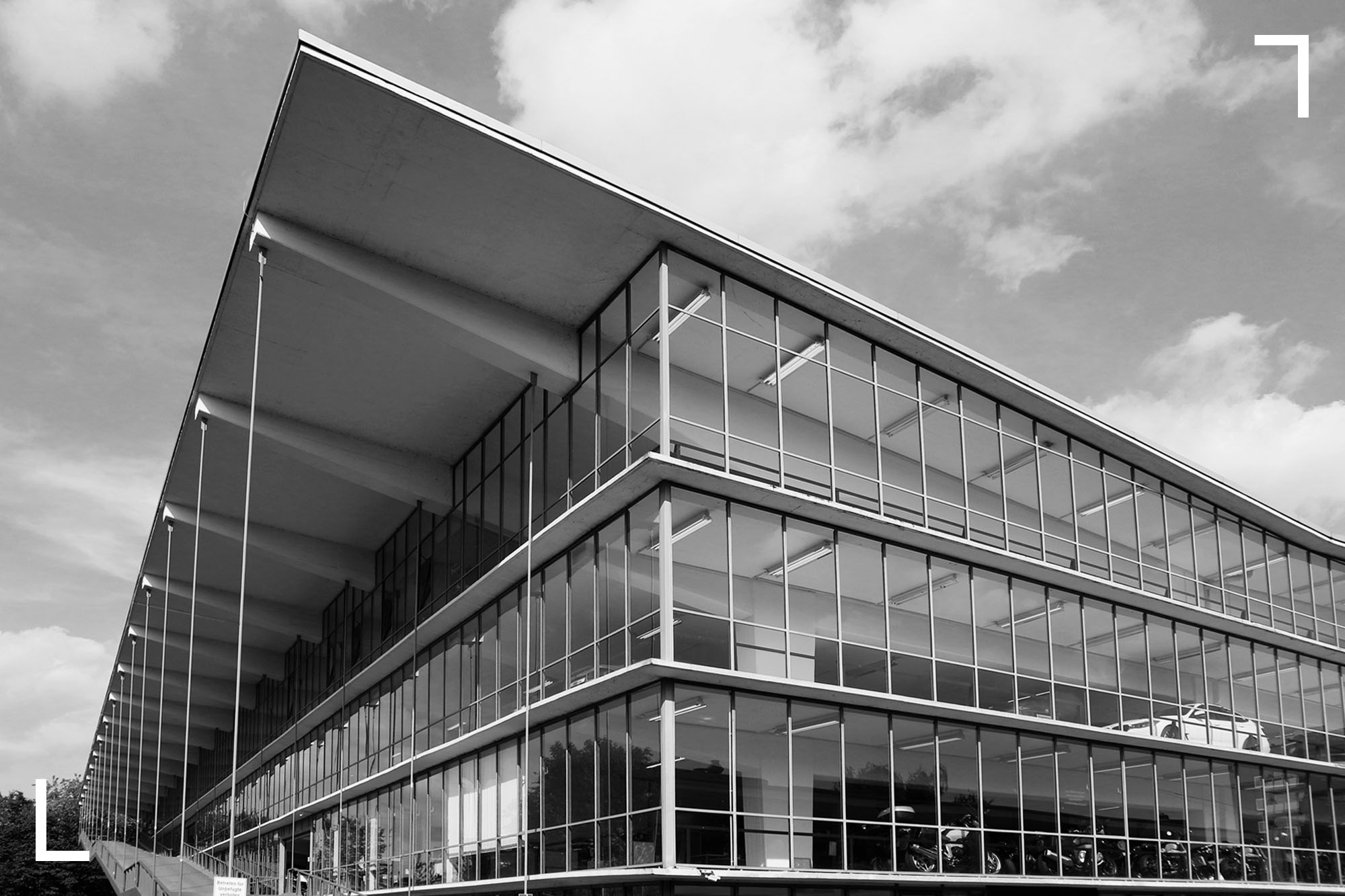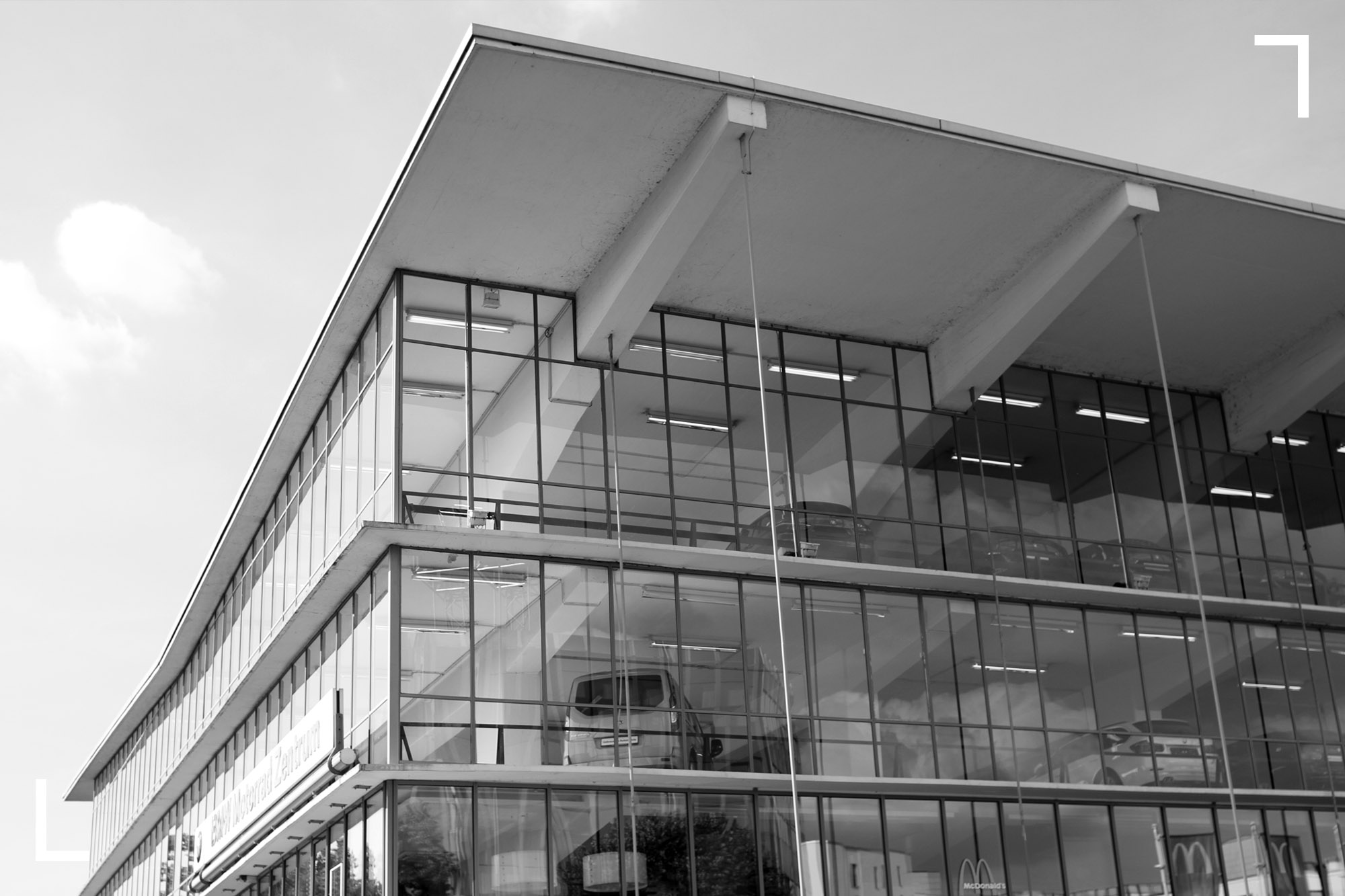THE LINK to #urbanana:
Haniel car park – Delicately framed
in English / Zoom: 

Haniel Garage
Built 1951, by Paul Schneider-Esleben. He is credited as an influential figure in the post-World War II modernist architectural movement in Germany. He was the father of Florian Schneider, one of the founding members of electronic music pioneers Kraftwerk. The building was listed in 1985 and restored in 1992/1993. The garage no longer is a public multi-storey car park but now used by a car dealership and a fast food diner, so try to ignore their ads and focus on the lightness and transparency of the building.
The German version: here.
Once I imagine away the whole hoopla of flapping banners and the orgy of neon signs, I get an idea of the unbelievable lightness and transparency of the first large-scale car park in Germany. The car park, which was open to the public at the time, was constructed with 500 parking spaces. What a sensation, at the beginning of the 1950s! The economy was humming, and cars along with it. The urban planners and architects of post-war modernism banked on the car-friendly city. In Düsseldorf, P.S.E. soon also constructed a small motel next to his filigreed glass box, very much according to the U.S. example. In this elevated building, there were twelve guest rooms and a restaurant. Underneath, there was room for more cars.
Today, there is only sweet-and-sour duck in the Chinese restaurant, close to a fast food diner in the main building. The entire ensemble has been protected as a historical monument since 1985, thanks to its significance to architectural history. The four-level car park is delicately framed and fully glassed-in. Both of its outer entrance ramps casually, easily hang down from the protruding concrete roof supports. The Haniel Garage is not just to be seen as a contemporary functional building, but as the then-young regional capital’s clear statement as to an internationally connected future.
Haniel Garage
Address: Grafenberger Allee 258, 40237 Düsseldorf, Germany
Paul Maximilian Heinrich Schneider von Esleben
28 August 1915–19 May 2005, known as Paul Schneider-Esleben, was a German architect. He studied architecture at the University of Applied Sciences Stuttgart in 1937 and graduated in 1947. He opened an architectural firm in Düsseldorf in 1949. His early designs included the multi-storey car park Haniel Garage, which was constructed in 1951 and made him famous. In 1955 he won a competition to design the expansion of Mannesmann-Hochhaus, Mannesmann's head office in Düsseldorf, which was the first German building to be constructed with a steel frame structure and curtain walls. He worked with artist members of Zero—Günther Uecker, Heinz Mack, Josef Piene and Joseph Beuys—in 1957–1961 to design the Rolandschule. From 1962 to 1970 he oversaw the redesign of the Cologne Bonn Airport into a layout that was adopted by numerous other international airports and led to his being hired as a consultant to architectural projects for many worldwide airports. Schneider-Esleben was a professor at the Hochschule für bildende Künste Hamburg from 1961 until 1972 as well as a visiting professor of the Vienna University of Technology in 1965. He was also a furniture designer, and often created specific furniture designs for his buildings, such as the "PSE 58" chair. Schneider-Esleben's work slowed in the 1970s as his modernist style became outdated in favour of postmodernism. He died in Tegernsee in 2005, aged 89.